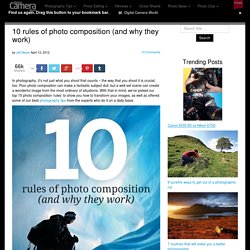

Ethics - Introduction to ethics: Ethics: a general introduction. 25+ Top Apps for Long Exposure Mode (android. How To Take Long Exposure Photographs On Your iPhone [Feature. The iPhone has quickly become the most popular camera in the world simply because it’s the camera that’s always on you.
Even though the iPhone’s camera doesn’t have anywhere near the same features and tools as a DSLR, that doesn’t mean you can’t squeak out some extra performance out of your iPhone to get pictures that look like a pro shot them. Long exposures are a basic staple of most DSLR photographers, but thanks to some awesome apps for iOS, iPhone users can join in the fun too without having to spend hundreds of dollars on gear. 25+ Top Apps for Long Exposure Mode (android. Innovative Event Shows, Light Painting and Media Art. Light Painting Photography. Photography comes from the Greek words phos (“light”), and graphis (“stylus”, “paintbrush”) or graphí, together they mean “drawing with light”.

Light Painting Photography can be broken down into 3 general categories. The first is Light Drawing this is where the light source can be seen by the camera, during a long exposure the artist uses this light source to draw or create a design within the frame. The second category is Kinetic Light Painting, for this light painting technique the lights in the scene generally remain stationary while the camera itself is moved about during a long exposure to create color and design within the frame. The third category is Light Painting, this is where the artist uses handheld light sources to selectively illuminate parts of a scene during a long exposure photograph. The history below identifies many of the pioneers of Light Painting Photography.
Education Exchange. Greatest photos ever taken. Editorial and Creative Photos. Panos Pictures - Photo agency specialising in global social issues. Creative Cloud and Erik Johannson. Community Translation Your transcript request has been submitted.

Adobe TV does its best to accommodate transcript requests. It can take a few weeks for the transcript to become available in the Community Translation Project, so keep checking back. Join the Community Translation Project Thanks for your interest in translating this episode! Please Confirm Your Interest Thanks for your interest in adding translations to this episode! An error occurred while processing your request. Another translator has already started to translate this episode. Top 10 Tips for Great Pictures. Londonsquared.net. 10 rules of photo composition (and why they work) In photography, it’s not just what you shoot that counts – the way that you shoot it is crucial, too.

Poor photo composition can make a fantastic subject dull, but a well-set scene can create a wonderful image from the most ordinary of situations. With that in mind, we’ve picked our top 10 photo composition ‘rules’ to show you how to transform your images, as well as offered some of our best photography tips from the experts who do it on a daily basis. Don’t feel that you’ve got to remember every one of these laws and apply them to each photo you take. Instead, spend a little time practising each one in turn and they’ll become second nature. You’ll soon learn to spot situations where the different rules can be applied to best effect. Photo composition doesn’t have to be complicated. 10 rules of photo composition (and why they work) Leading Lines – Photography Composition. Rule of Thirds. Filling the frame — Alex Rumford Photography. Having said all this, with such emphasis on tightness, you do often need some space for the subject to 'breathe', as in the image of the field worker.

As we mentioned, too many pictures too close, and pictures become cramped. So for a portrait of someone at home, a little extra in the frame can help to locate your subject, without necessarily resulting in dead space. As you move back, you can give information as to the clothes they're wearing, then their pose, then how they 'sit' in their space, their body language. Further back and you include perhaps their furniture, even the type of books they like to read. What is Composition in Photography? With the first article in our new Mastering Composition series, it is only fitting that we start off by discussing the very definition of our main topic.

In this article for beginner photographers, I will outline the general meaning of the term “composition” in art. I will also briefly discuss the goal of composition, define what a good composition is and why it is such an important part of any work of art. How Does Your Camera Work? The familiar nursery rhyme goes: Mary, Mary, quite contrary, How does your garden grow?

With silver bells, and cockle shells, Photographic Processes. Explanations of processes used to make photographs found in the V&A Photography collection.

Albumen print | Autochrome | C-type print | Calotype | Carbon print | Collage and Montage | Collodion negative | Collotype | Cyanotype | Daguerreotype | Digital image | Dye destruction print | Dye transfer print | Gelatin-silver print | Photogenic drawing | Photogram | Photogravure | Platinum print | Polaroid | Salt print | Woodburytype 'Compton, Surrey', photograph by Benjamin Brecknell Turner, England, 19th century, albumen print.
Museum no. PH.34-1982, © Victoria and Albert Museum, London Albumen print The albumen print was invented in 1850 and was the most common type of print for the next 40 years. Explore albumen prints using Search the Collections Ballet Dancer Tamara Karsavina (1885-1978), photograph by Baron Adolph de Meyer of Kassavana, 1908, autochrome. "How Many Digital Photos Do Americans Take a Year?" A lot. A recent article on Hyperallergic investigated the astounding growth of photos taken with camera phones.

Although this is not any news to anyone who frequents the internet, especially forums like Facebook, Instagram, and Flickr, seeing the facts and trends is certainly interesting. According to National Geographic, last year 37% of the images taken in the U.S. were captured with camera phones, and this number is expected to rise to 50% by 2015. How the Camera Obscura works. Pinhole photography by Justin Quinnell. Pinhole photography by Justin Quinnell.